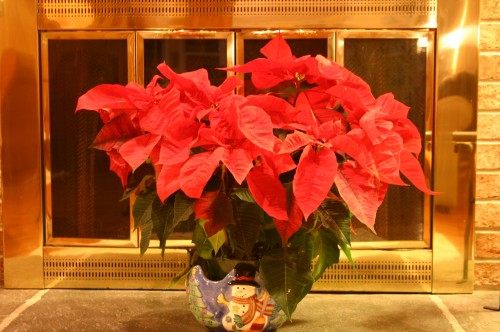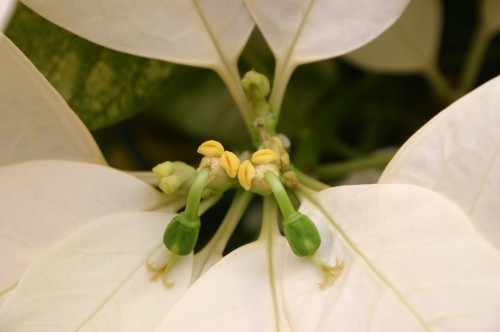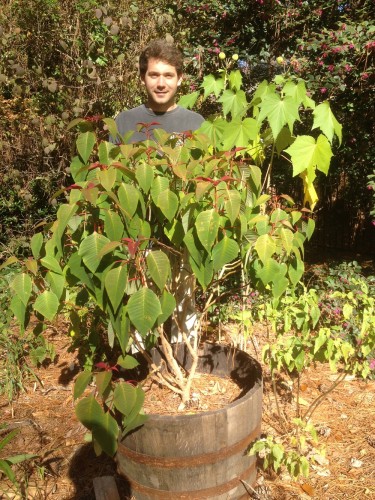





Poinsettias are NOT poisonous. That old myth was dispelled by a research project at The Ohio State University in 1975. While the latex sap may be irritating to the eyes, the plants are not toxic.
All poinsettia flowers are yellow. The showy “flowers” of red, pink or white are actually floral bracts (modified leaves). The true flowers are those pouch-shaped things in the centers of the bracts.
Protect your poinsettia from freezing weather when you buy it or take it home from church. Thirty seconds of exposure to below-freezing temperatures will ruin a poinsettia. Have the car warmed up.
Remove the foil wrapper or poke several holes in the bottom so water can drain from the soil freely.
Keep your plant cool (70 degrees), bright (near a window) and slightly moist (never soggy) at all times. The single biggest reason poinsettias become unattractive indoors is that we let them get too dry. Check for drafts in the place you choose to display your poinsettia. Hot air from a furnace or cold air from a drafty window can make leaves dry faster than normal.
You don’t want to keep it waterlogged, either, but certainly do not let it wilt.
Your plant will not require fertilizer while it’s inside. It really isn’t attempting to grow, so additional nutrients are unnecessary.
If you intend to keep your plant for the next year, leave it in its current pot until late winter or early spring. Trim it back once the floral bracts have faded. Poinsettias are unruly growers, so it will need a larger pot by March, and you’ll probably want to pinch out its growing tips every month or so to keep it compact. By the end of the summer, it should be in a large pot (24 to 30 inches) filled with good potting soil. By October 1, give it total darkness for 14 hours each night and bright sunlight for 10 daylight hours. Those extended periods of uninterrupted dark are what triggers the flowering process.
Toxicity of Christmas and Holiday Plants

poinsettia

poinsettia flower

Three-year-old poinsettia
Copyright © www.100flowers.win Botanic Garden All Rights Reserved